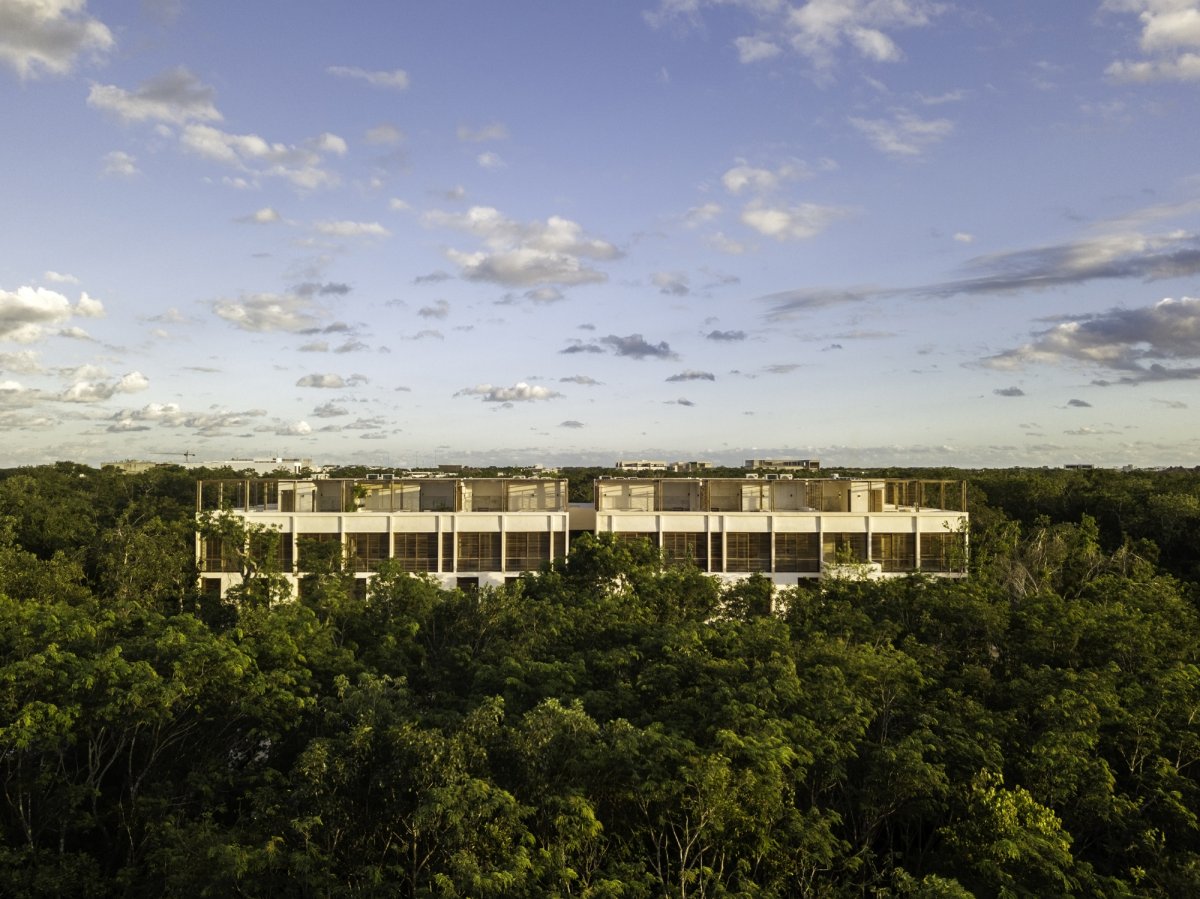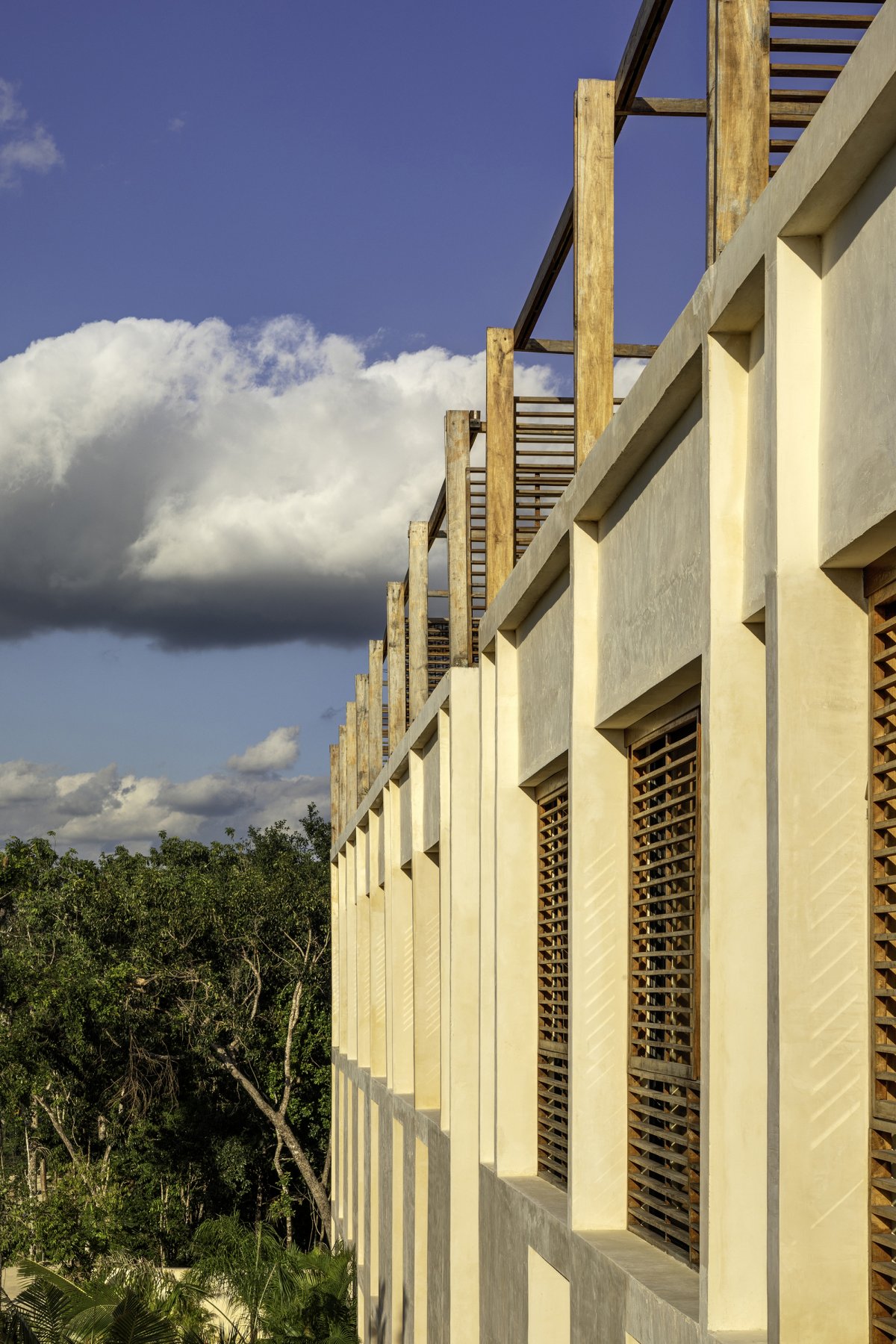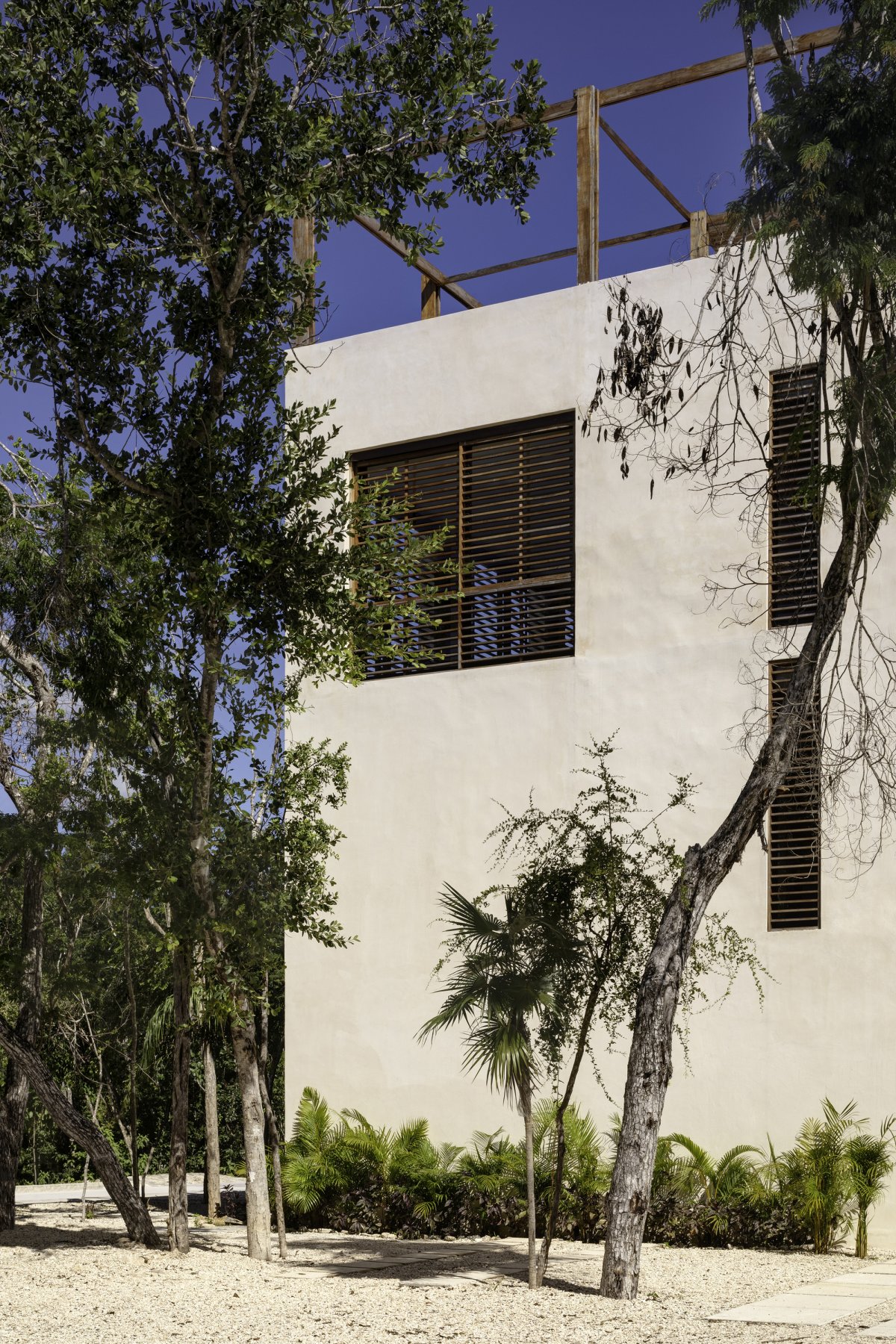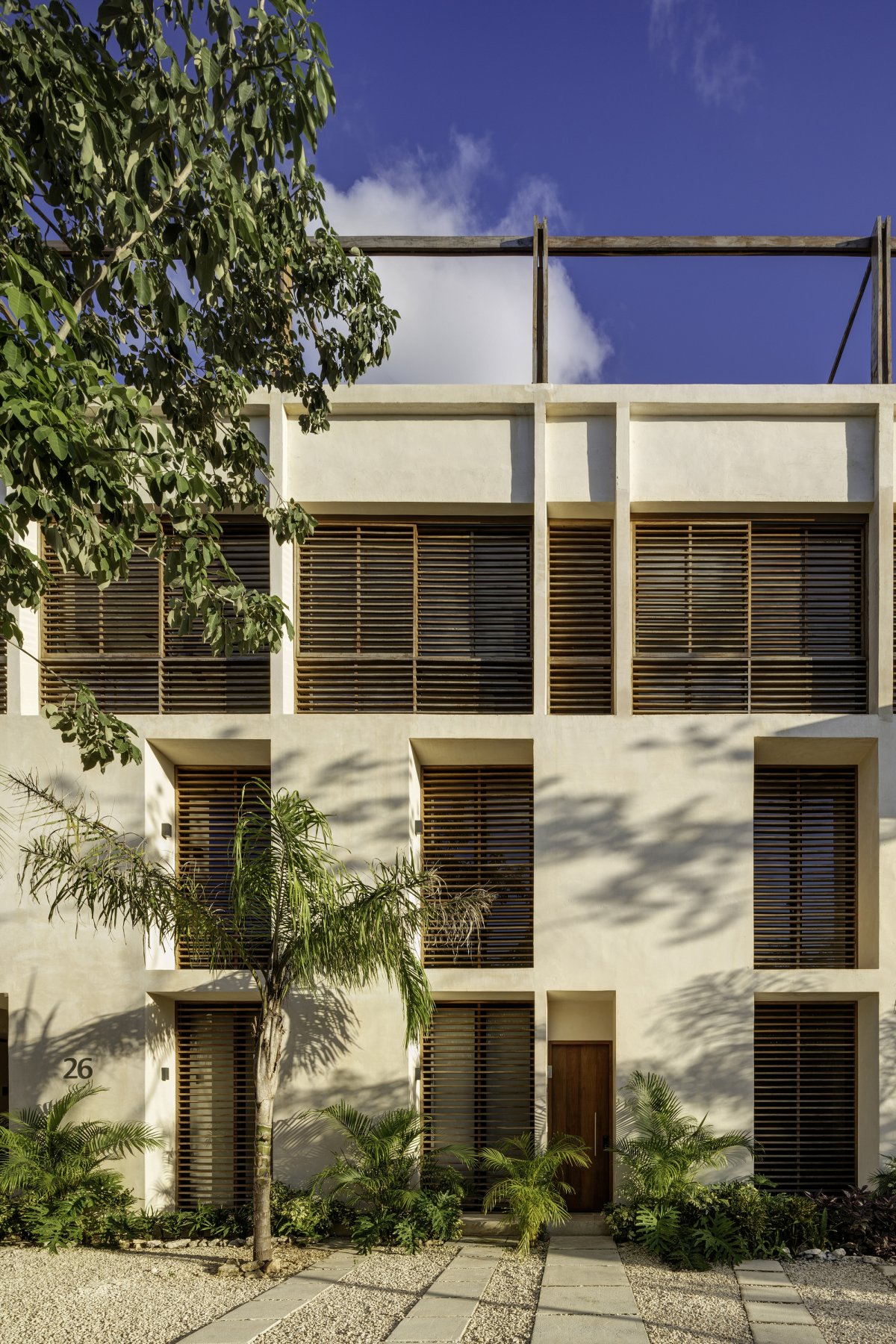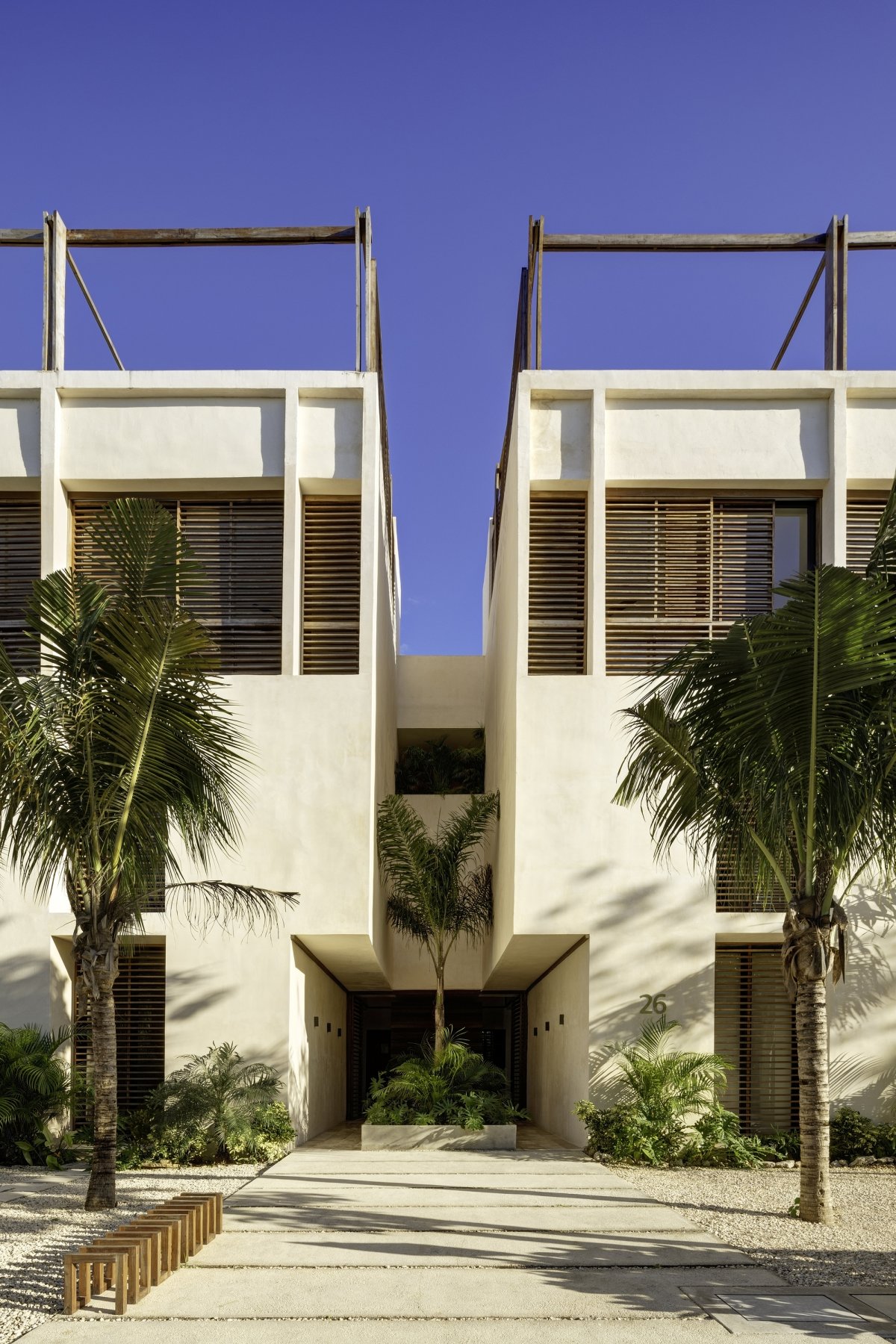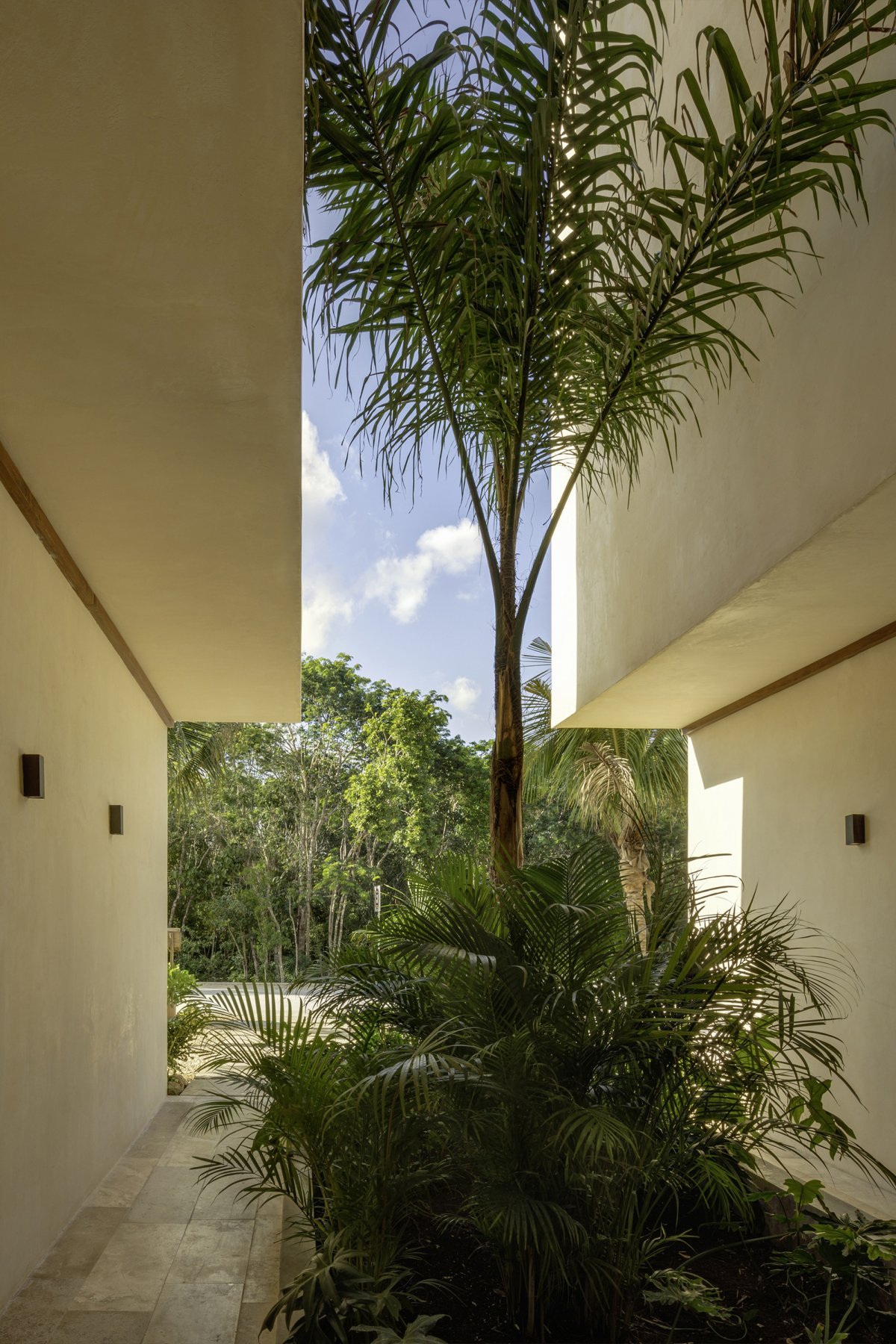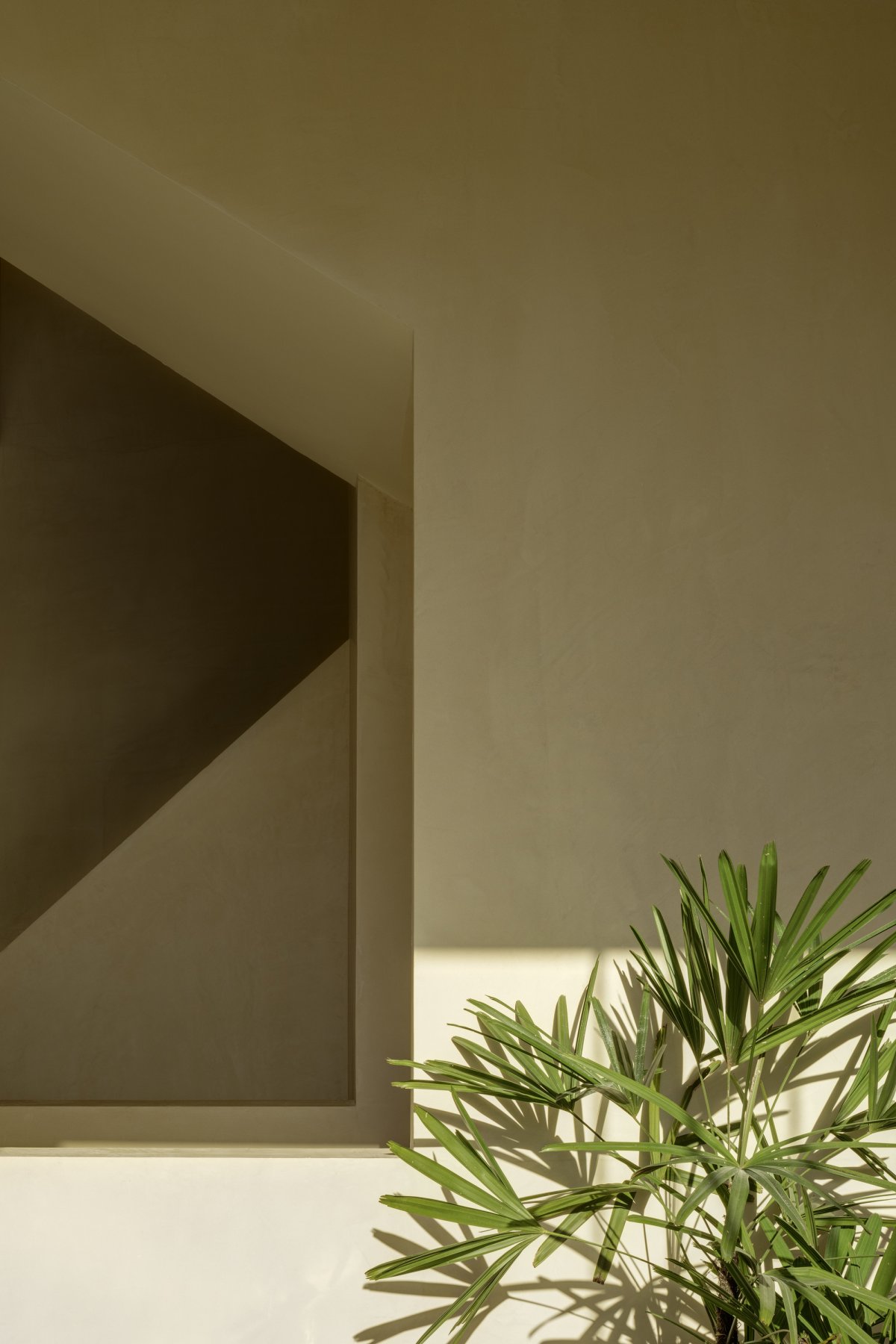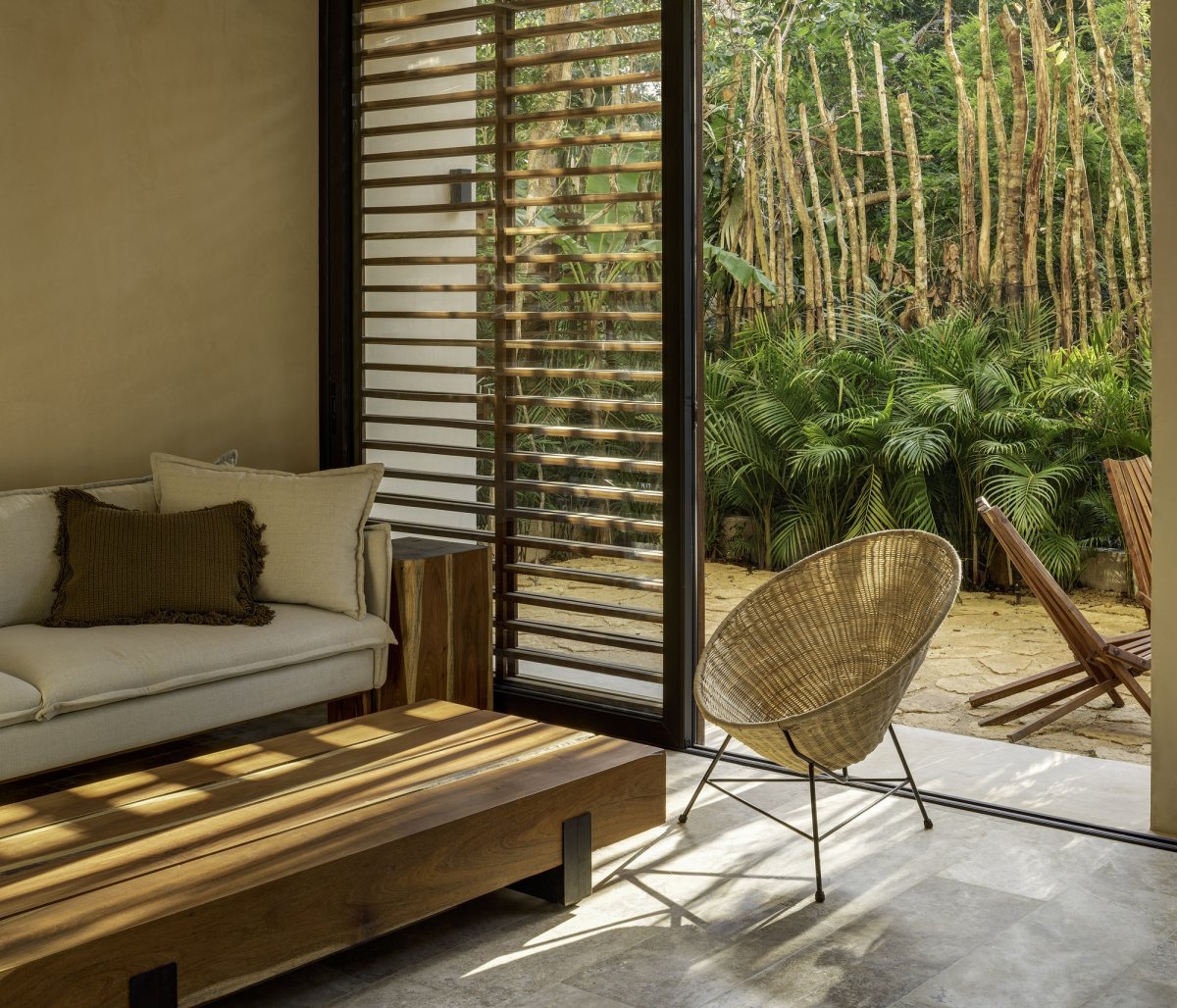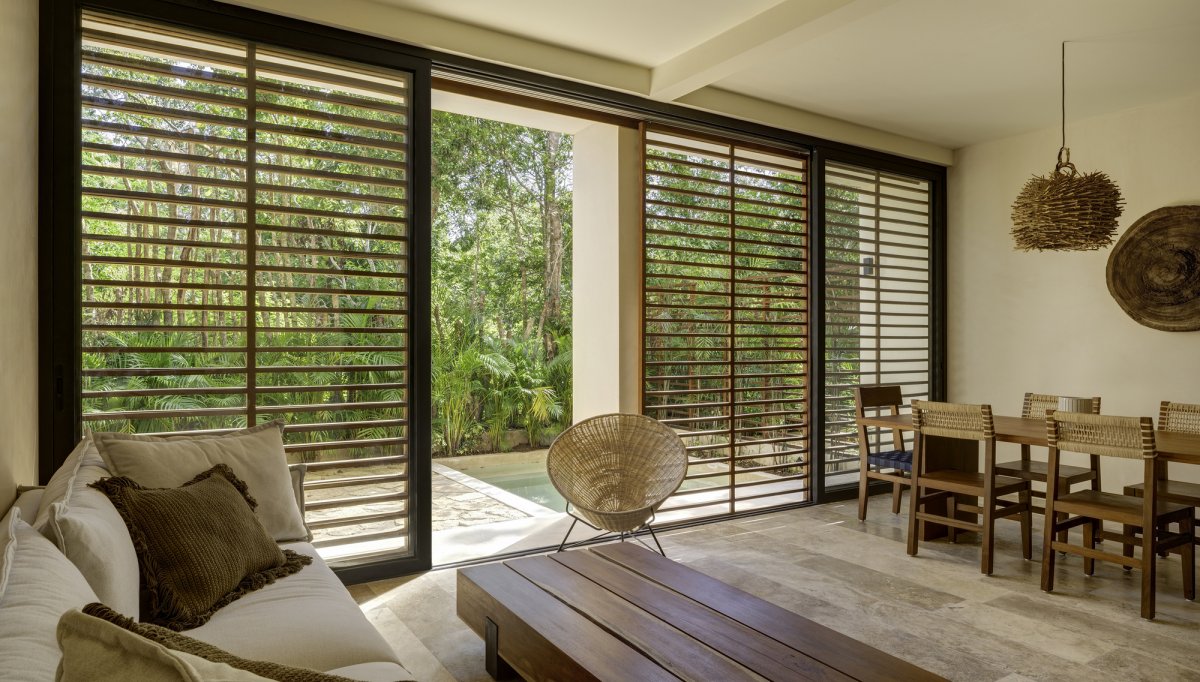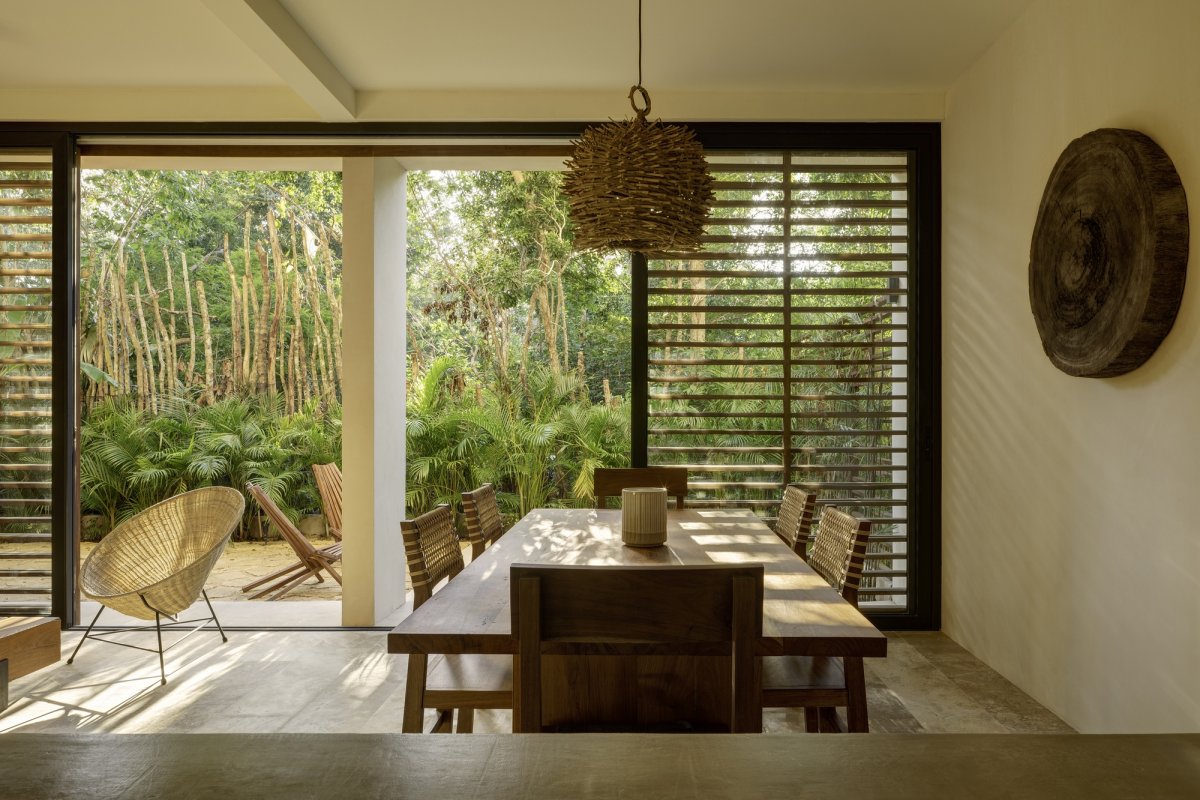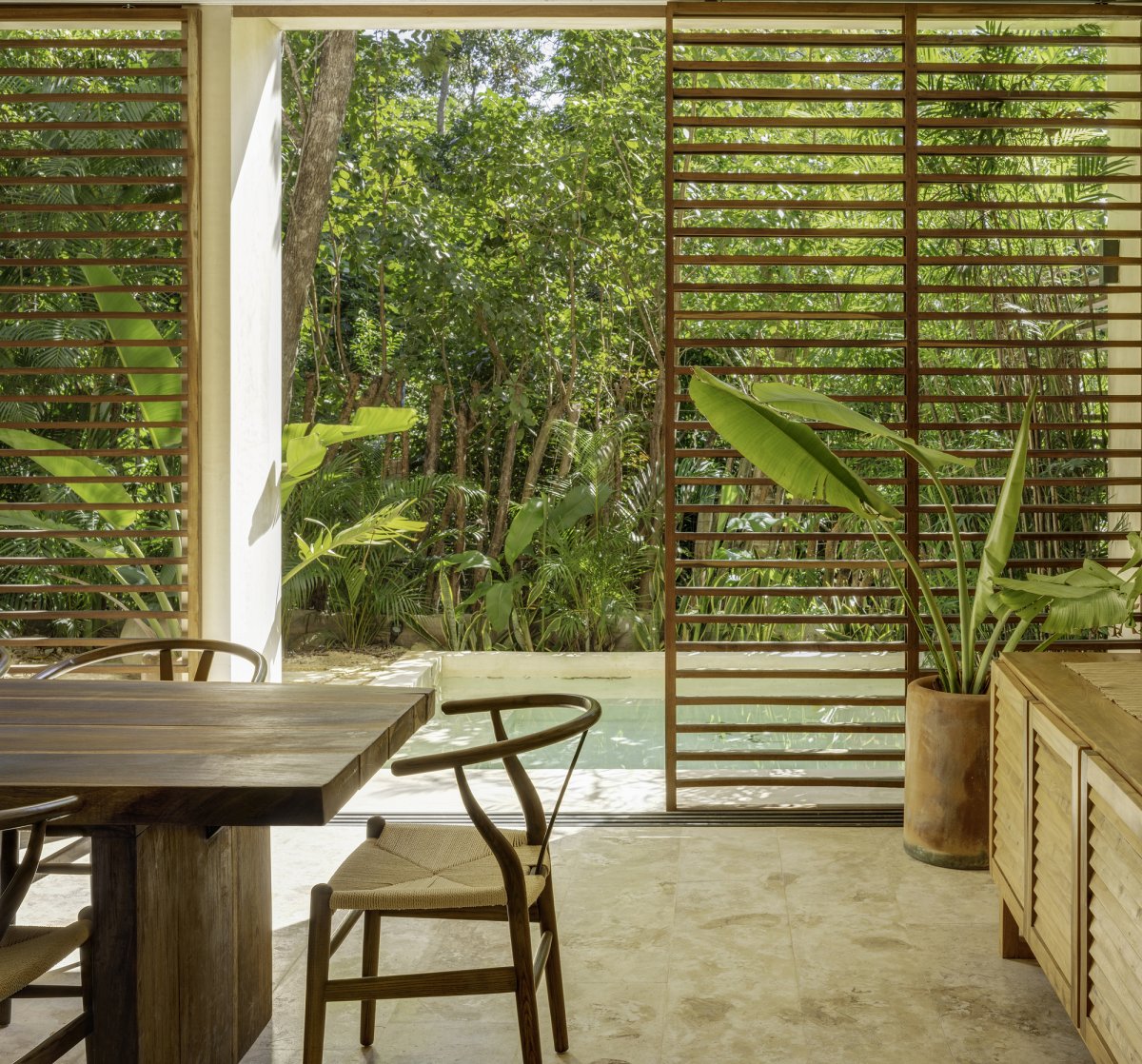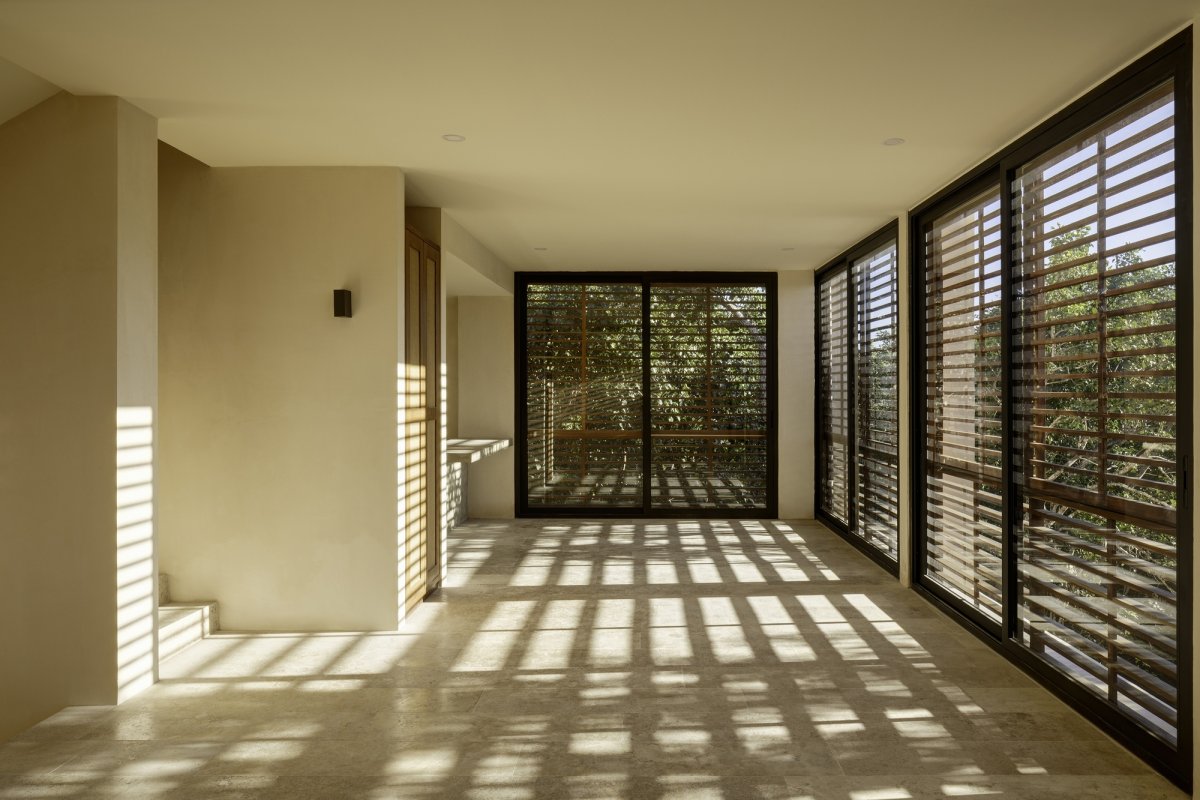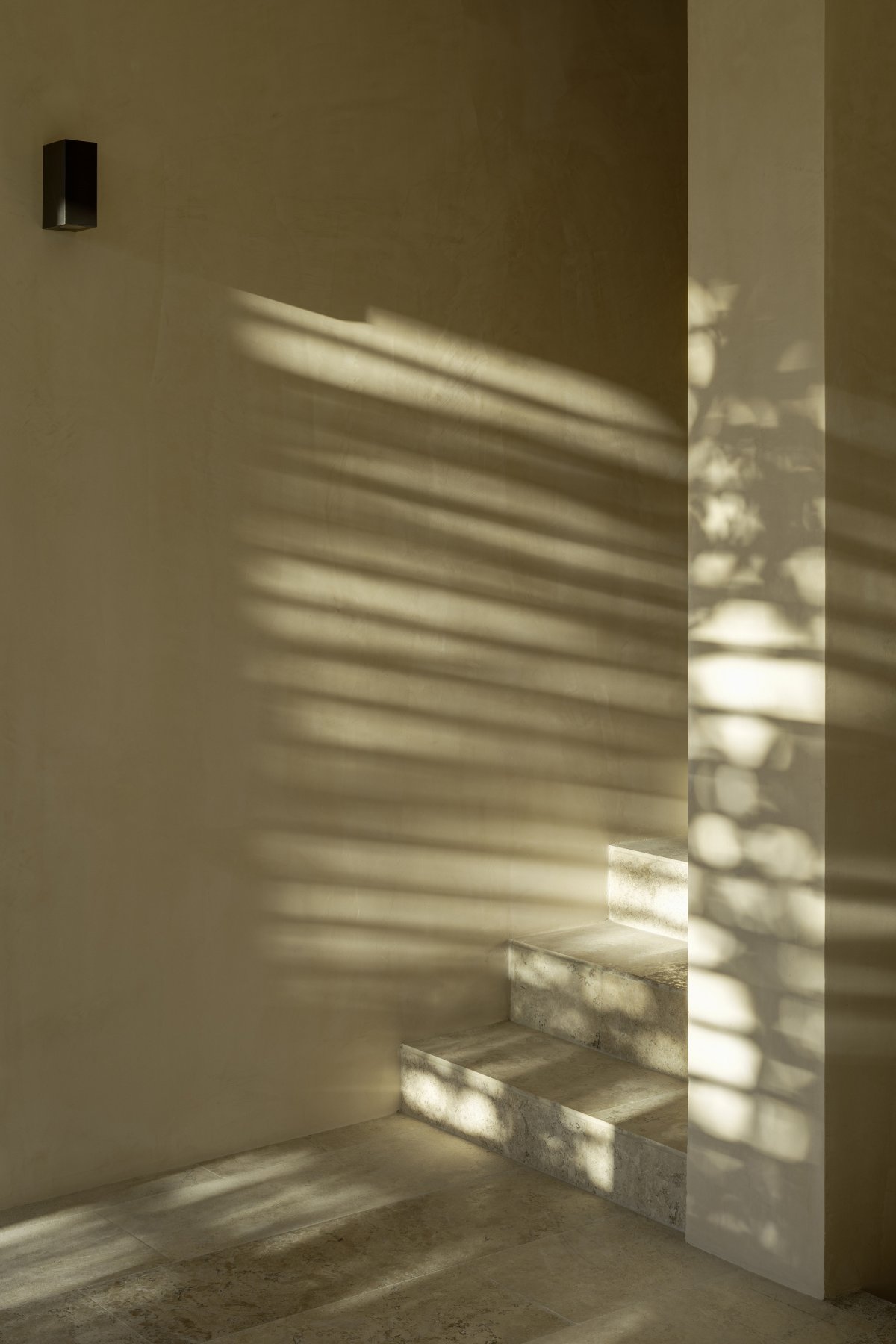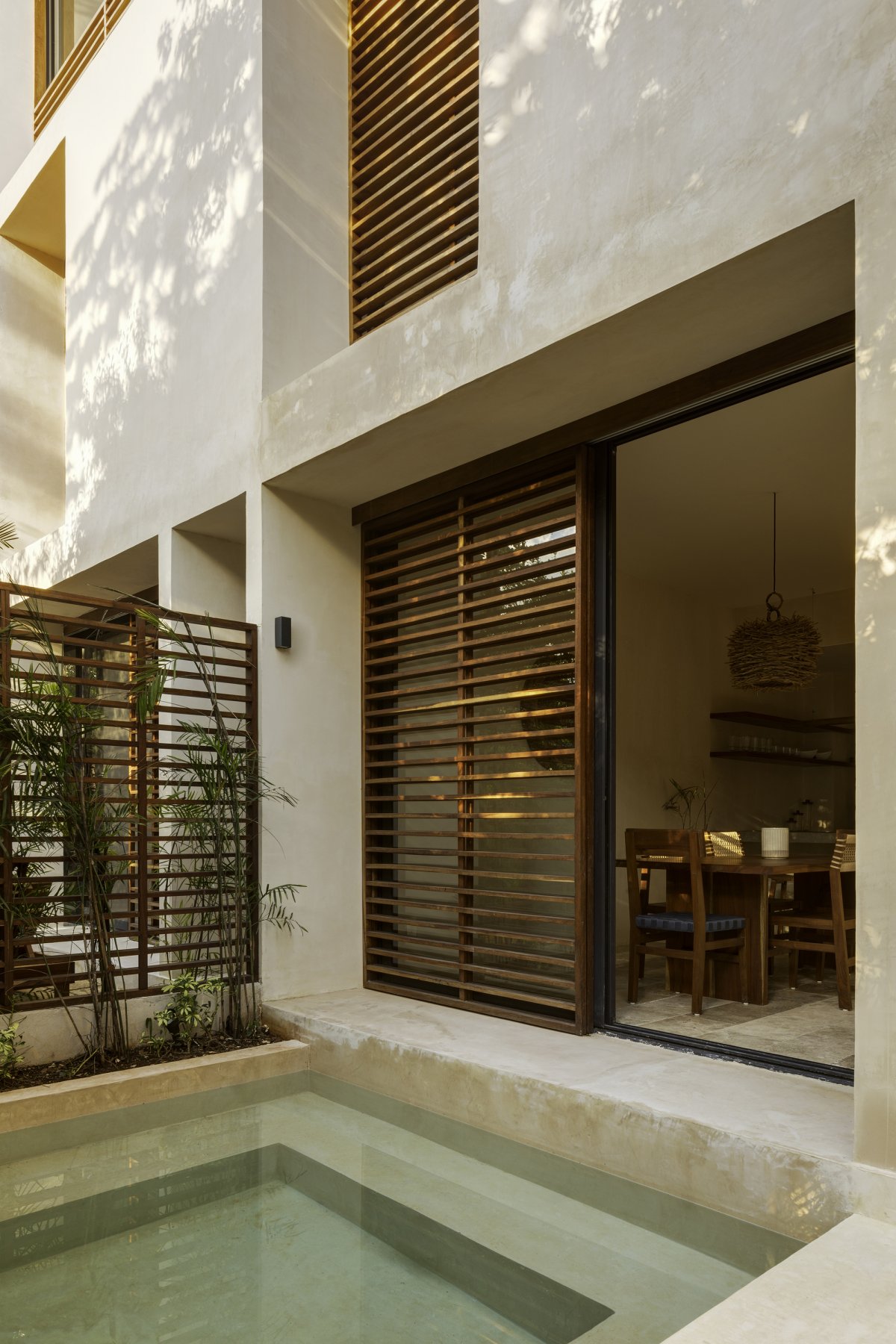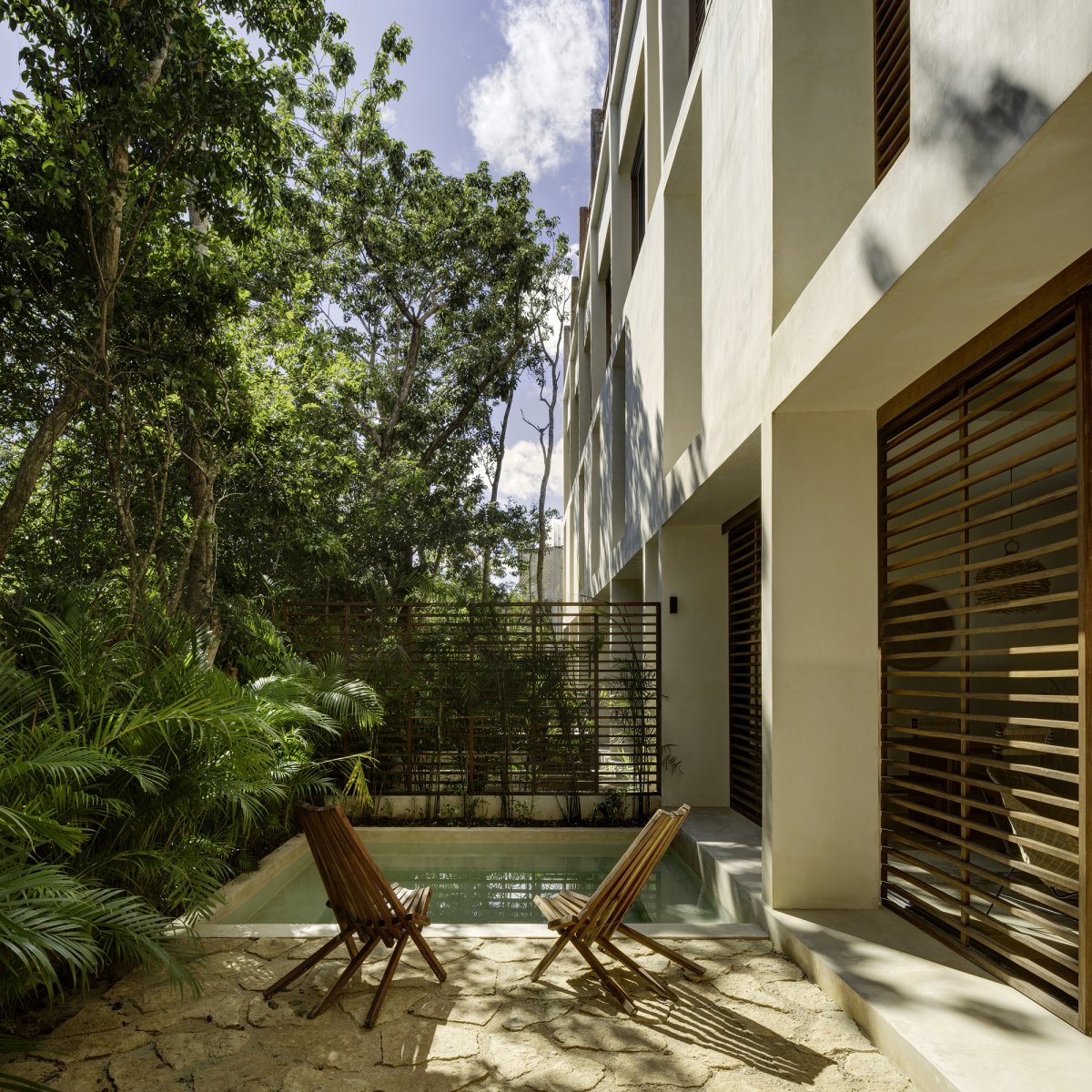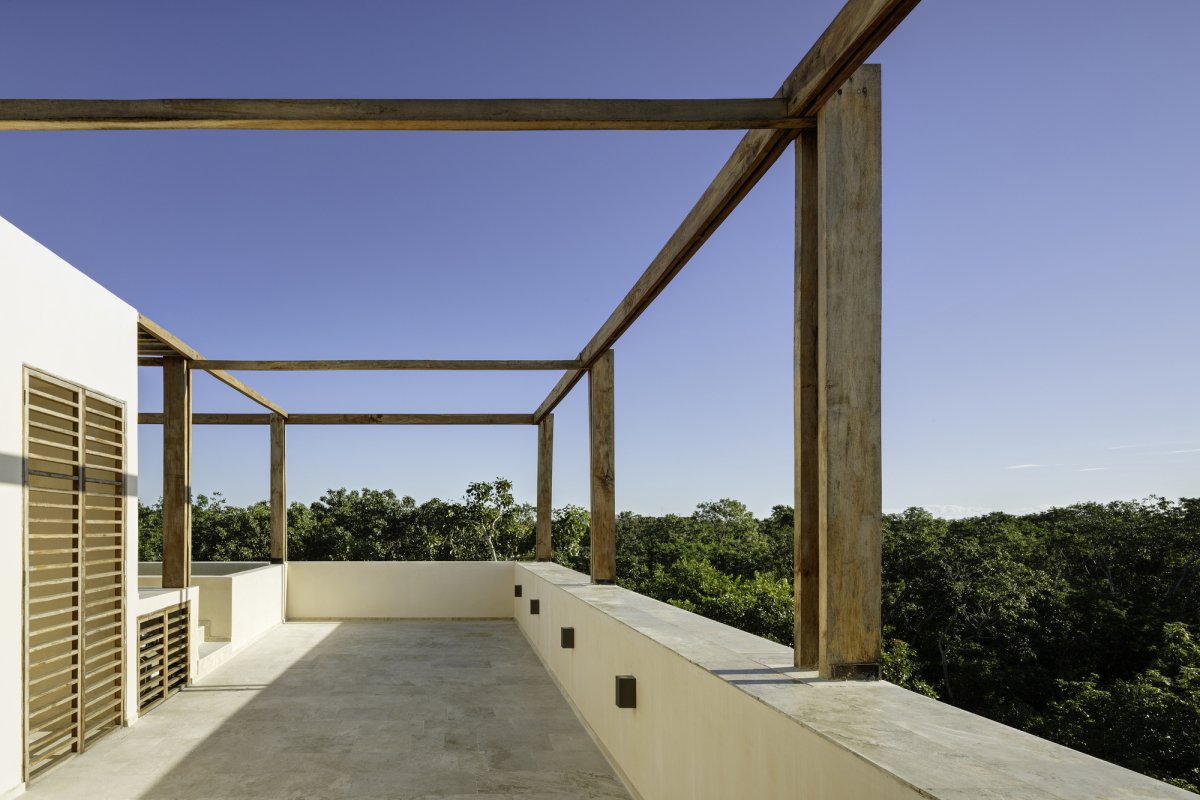
The project involves designing a block of 18 apartments for vacation purposes for a development agency located in Aldea Zamá, south of Tulum, Mexico. The site is characterized by tropical vegetation and soft soil, it is located about a hundred meters from the main beach. The vegetation includes native shrubs and tall palm trees, most of which need to be preserved. A panoramic view of wild garden-like vegetation can be seen from the main floor, and from the upper levels one can see treetops and views of the ocean.
The scheme is resolved by placing the building block in the middle of the site in order to achieve maximum privacy from the neighbors and future constructions with the idea of generating a private outdoor space for each of the apartment units. A set of six detached one-story apartments are organized on the ground floor, each with private access to its own garden. The other 12 units were organized into two-story living spaces, with private areas on the second and public areas on the third level. A dialogue from the third level to the roof provides each of the apartments with a private outdoor space with panoramic views of the jungle.
The result is a reduced number of square meters in circulation spaces, preserving the architectural language as a result of the scheme. The ground floor, together with the stairs, service spaces, and bathrooms, is mostly closed to the street and completely open to the gardens. The second level is the most closed within both facades where the private areas of the duplex are located. The third level is a semi-open space with wooden shutters on the facades to protect the rooms from rain and strong winds. The public areas of the duplexes and their relationships with the rooftops are defined by wooden frames.
Leaving nature as the protagonist, the architecture is minimal and neutral, using only three natural materials, wood, washed concrete, and chukum. The chukum tree is a spiny, semi-hardwood tree found throughout the Yucatan peninsula, used to dye textiles and tan leather. To create chukum stucco, the bark of the tree is boiled twice and then mixed with cement, which can be used to finish walls or pools. Chukum bark also naturally gives the stucco its earthy color, creating a warm, rustic atmosphere typical of the Yucatan region.
- Architect: PPAA
- Photos: Rafael Gamo

